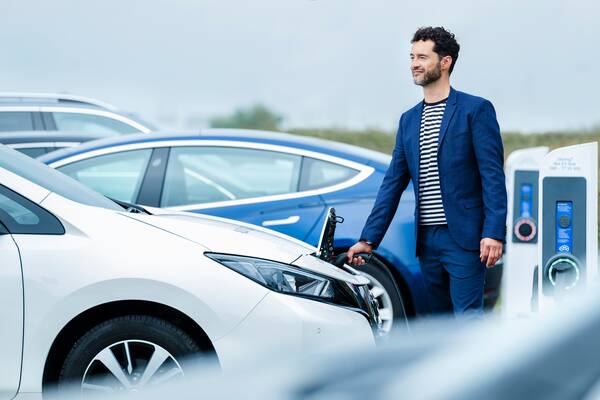63% of lease drivers with an electric car indicate that there are too few charging points in the neighbourhood, according to research conducted by ALD Automotive at the end of 2021 among more than 1.000 lease drivers. In addition to the large majority who believe that there are too few charging points in the residential area, there are more outcomes that can be mentioned:
- 60% of lease drivers charge an electric car at home
- 48% drive on to another neighborhood to charge
- 64% believe that the government invests too little in public charging network
- Another 54% believe that the government invests too little in charging options at companies
In 2021, the electric fleet in the Netherlands will have increased significantly and more and more lease drivers are opting for electric. 63% of lease drivers with an electric car indicate that there are too few charging points in the neighbourhood. With regard to the number of charging points in the municipality, even 68% of lease drivers believe that there are too few. The vast majority of lease drivers would therefore like to see the government invest more in the construction of public charging points. This and more is apparent from a study by ALD Automotive among more than 1.000 lease drivers.
Despite the fact that there are too few charging points in the district, a majority (60%) of current lease drivers who drive electrically do not experience charging as a problem. If there are problems with charging, it is because there are no (available) charging stations (37%) or that they charge too slowly (24%). If there is no public charging point available, lease drivers drive on to another district (48%), 13% postpone charging and 17%, although prohibited, lay a power cable over the sidewalk.
“We have been saying for some time that the development of the public charging infrastructure is lagging behind. This research confirms our experiences and suspicions. We therefore call on the government to accelerate investment in charging points – especially in the large cities – and the energy network, combined with tax incentives. Otherwise, I don't see it going well with the mobility ambitions in the Climate Agreement. By 2030, the government wants every new car to be electric. To do this, 1,9 million charging points have to be realised. An important part of this is public charging stations."
Jeroen Kruisweg CEO ALD Automotive Netherlands.
EV drivers believe that too little is being invested in the public charging network
Most EV drivers charge their car at home (60%) or in the street (18%). Only 15% do that at work. 64% of lease drivers believe that the government invests too little in the public charging network. This also applies to charging facilities at companies. By investing more in charging points at companies, the pressure on the public charging network can be removed. More than 54% expect the government to play a role here too.
Charging costs big advantage
The current generation of EV drivers is very positive about charging costs. The fact that charging is cheaper than refueling is also one of the biggest advantages of electric driving in 44% of the cases. The fact that fuel prices are now so high also plays a role here. Currently, more than half of the lease drivers indicate that they take this aspect into account when considering an electric car as their next car (52%).
Also read: Electric charging and also paid parking



